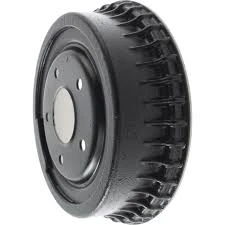
-
 Afrikaans
Afrikaans -
 Albanian
Albanian -
 Amharic
Amharic -
 Arabic
Arabic -
 Armenian
Armenian -
 Azerbaijani
Azerbaijani -
 Basque
Basque -
 Belarusian
Belarusian -
 Bengali
Bengali -
 Bosnian
Bosnian -
 Bulgarian
Bulgarian -
 Catalan
Catalan -
 Cebuano
Cebuano -
 Corsican
Corsican -
 Croatian
Croatian -
 Czech
Czech -
 Danish
Danish -
 Dutch
Dutch -
 English
English -
 Esperanto
Esperanto -
 Estonian
Estonian -
 Finnish
Finnish -
 French
French -
 Frisian
Frisian -
 Galician
Galician -
 Georgian
Georgian -
 German
German -
 Greek
Greek -
 Gujarati
Gujarati -
 Haitian Creole
Haitian Creole -
 hausa
hausa -
 hawaiian
hawaiian -
 Hebrew
Hebrew -
 Hindi
Hindi -
 Miao
Miao -
 Hungarian
Hungarian -
 Icelandic
Icelandic -
 igbo
igbo -
 Indonesian
Indonesian -
 irish
irish -
 Italian
Italian -
 Japanese
Japanese -
 Javanese
Javanese -
 Kannada
Kannada -
 kazakh
kazakh -
 Khmer
Khmer -
 Rwandese
Rwandese -
 Korean
Korean -
 Kurdish
Kurdish -
 Kyrgyz
Kyrgyz -
 Lao
Lao -
 Latin
Latin -
 Latvian
Latvian -
 Lithuanian
Lithuanian -
 Luxembourgish
Luxembourgish -
 Macedonian
Macedonian -
 Malgashi
Malgashi -
 Malay
Malay -
 Malayalam
Malayalam -
 Maltese
Maltese -
 Maori
Maori -
 Marathi
Marathi -
 Mongolian
Mongolian -
 Myanmar
Myanmar -
 Nepali
Nepali -
 Norwegian
Norwegian -
 Norwegian
Norwegian -
 Occitan
Occitan -
 Pashto
Pashto -
 Persian
Persian -
 Polish
Polish -
 Portuguese
Portuguese -
 Punjabi
Punjabi -
 Romanian
Romanian -
 Russian
Russian -
 Samoan
Samoan -
 Scottish Gaelic
Scottish Gaelic -
 Serbian
Serbian -
 Sesotho
Sesotho -
 Shona
Shona -
 Sindhi
Sindhi -
 Sinhala
Sinhala -
 Slovak
Slovak -
 Slovenian
Slovenian -
 Somali
Somali -
 Spanish
Spanish -
 Sundanese
Sundanese -
 Swahili
Swahili -
 Swedish
Swedish -
 Tagalog
Tagalog -
 Tajik
Tajik -
 Tamil
Tamil -
 Tatar
Tatar -
 Telugu
Telugu -
 Thai
Thai -
 Turkish
Turkish -
 Turkmen
Turkmen -
 Ukrainian
Ukrainian -
 Urdu
Urdu -
 Uighur
Uighur -
 Uzbek
Uzbek -
 Vietnamese
Vietnamese -
 Welsh
Welsh -
 Bantu
Bantu -
 Yiddish
Yiddish -
 Yoruba
Yoruba -
 Zulu
Zulu
Instructions for Using a Drum Brake Spring Tool Effectively and Safely
How to Use a Drum Brake Spring Tool
Drum brakes are a crucial component of many vehicles, providing reliable stopping power. However, working on drum brakes can be challenging, particularly when it comes to handling the springs. This is where a drum brake spring tool comes into play. This specialized tool simplifies the process of removing and replacing the springs in your drum brake system, making your brake job easier and safer. Here's a guide on how to use a drum brake spring tool effectively.
Understanding the Tool
Before diving into the actual steps, it's essential to familiarize yourself with the drum brake spring tool. Typically, this tool consists of a metal rod with handles and a unique hook at one end designed to grasp the springs. Some versions include a lever mechanism that allows for easy extension and retraction, aiding in the safe removal and installation of springs.
Step-by-Step Guide to Using a Drum Brake Spring Tool
1. Safety First Always ensure you're wearing safety glasses and gloves when working on your vehicle's braking system. This protects you from debris and potential injury.
2. Preparation Begin by lifting your vehicle and removing the wheel. Use jack stands for stability and ensure the surface is level to prevent any accidents.
3. Remove the Drum Take off the drum brake cover. Depending on your vehicle, you may need to remove additional screws or clips. Once these are off, slide the drum off the brake shoes.
how to use a drum brake spring tool

4. Inspect the Brake Assembly Before using the spring tool, inspect the brake assembly for wear and damage. Make note of how springs and other components are positioned; taking pictures can be helpful for reassembly.
5. Using the Spring Tool - Remove the Old Springs Position the hook of the spring tool onto the spring you want to remove. Gently pull the handles apart to create tension on the spring, allowing you to unhook it from the brake shoes. Be careful; springs can snap back if released too quickly. - Install New Springs Place the new spring on the tool's hook. Line it up with the appropriate attachment point on the brake shoes. Again, use the tool to create tension and carefully hook the spring into place. Ensure it is positioned correctly, as incorrect placement can result in poor brake performance.
6. Reassemble the Brake Components Once all springs are replaced, double-check your work. Ensure that each spring is secure and that all components are appropriately connected.
7. Reattach the Drum With the springs and shoes in place, slide the drum back over the assembly. Ensure it spins freely and that there are no obstructions.
8. Final Touches Reattach the wheel, lower the vehicle, and perform a brake test before hitting the road. Ensure you have a firm pedal feel, and listen for any unusual noises.
Conclusion
Using a drum brake spring tool is a straightforward process that can significantly streamline brake maintenance. By following these steps, you can ensure your drum brakes operate efficiently while also enhancing your safety. Remember, if you're ever unsure or uncomfortable with brake servicing, it's best to consult a professional mechanic. Proper maintenance of your drum brake system is essential for safe driving, so take the time to learn and apply these techniques.
-
What Are Drum BrakesNewsJul.07,2025
-
Understanding Brake Drum MaterialNewsJul.07,2025
-
Semi-Trailer Brake Drum: A Key Component for Extreme Loads and Long-Distance TransportNewsJul.07,2025
-
Drum Brake Pads for SaleNewsJul.07,2025
-
Brake Drums for SaleNewsJul.07,2025
-
Brake Drum ManufacturerNewsJul.07,2025
-
Aluminum Brake Drums: The Future of High-Performance CarsNewsJul.07,2025
